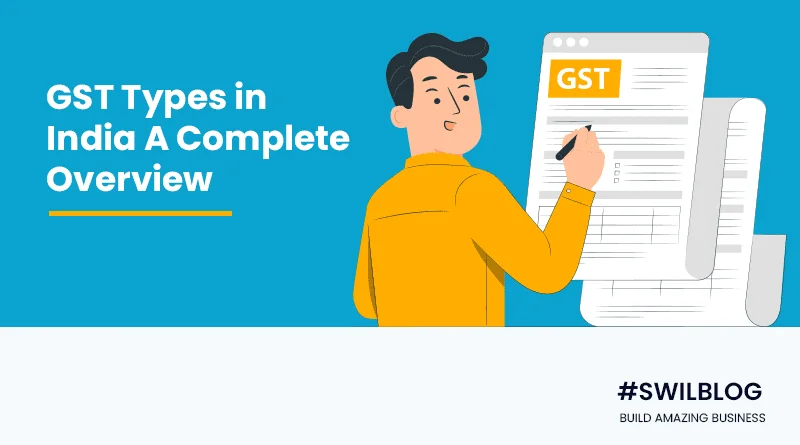The primary goal of the GST Bill is to establish a single tax system that applies from the manufacturing stage to the delivery of goods or services to the final consumer. It is a single tax with a complete set-off before taxes are paid in the global marketplace.
An indirect tax rate that will be used uniformly throughout the nation is the goods and services tax (GST). Combining the nation’s present federal and state taxes creates a single tax rate. 2014 saw the first introduction of India’s Constitution (122nd Amendment) Bill.
Article Content-
- What is the Goal of GST?
- Benefits Of GST(Goods and Service Tax)
- GST Types and Explanations
- Conclusion
What is the Goal of GST?
GST should be implemented in the country for several reasons, including:
- Before implementing the GST regime, the Central and State governments levied a wide range of taxes.
- Each state government had its own set of tax policies and regulations.
- The federal government imposed a central state tax on interstate transactions.
- Internal trade suffered greatly due to differing taxes or a need for uniformity in the tax structure. The overlapping state and federal taxes and the tax regime’s cascading effect harmed interior work.
Benefits Of GST(Goods and Service Tax)
Elimination of the Cascading Effect
The cascading impact of taxes will be avoided by implementing the GST. The input tax credit may be claimed easily under the GST framework.
Unorganized sector regulation
There are still some unorganized sectors in India. By easing the process of online compliance and payments, the GST laws would help in the regulation of the unorganized sector.
Taxation in a consistent manner
It harmonizes laws, processes, and tax rates nationwide, resulting in a more straightforward tax system.
GST procedures are entirely online.
From registration through return filing, the entire GST process is accomplished online. This would be very useful for new firms since they would not have to register with many indirect tax systems.
Revenue Growth
Because GST replaces 17 indirect taxes with a single tax, it increases product demand and income for both federal and state governments.
GST Types and Explanations
According to the newly established tax structure, there are four main categories of GST:
Integrated Goods and Services Tax (IGST)
The IGST, or integrated goods and services tax, is a tax imposed under the IGST Act on the delivery of any commodities and services during interstate trade or commerce. The center will levy IGST on inter-state supplies of goods and services, imports and exports, and supplies to and from special economic zones.
The sale, transfer, exchange, or lease of products or services for a charge to grow a company is referred to as a “supply.” In addition, IGST will be levied on any supply not covered by the Central and State GST Acts.
State Goods and Services Tax (SGST)
The State Goods and Services Tax (SGST) is a tax levied on intrastate transactions in which the customer and producer are both in the same state. As the name indicates, the State GST is a tax-collecting tool for the state government. In the event of intrastate transactions, it is collected as a separate tax. Like the CGST, the GST Act levies a tax on all sales, purchases, and other non-exempt transactions.
The current state taxes of State Sales Tax, VAT, Luxury Tax, Entertainment Tax, Taxes on Lotteries, Betting, and Gambling, Entry Tax Not instead of Octroi, State Cesses and Surcharges about the Supply of Goods and Services, and so forth will be combined into a single tax known as State SGST when the SGST is implemented.
Central Goods and Services Tax (CGST)
The Central Goods and Services Tax applies to intrastate transactions in which the vendor and consumer are from the same state (CGST). The CGST levies goods and services to enable the government to collect taxes. The CGST is collected concurrently with the SGST.
In contrast to IGST, CGST is organized as a separate tax and submitted to the Central Government for intrastate transactions. CGST is collected on various items, from necessities to extravagances, manufacturing, and professional services.
The Central Government of India levies the Central Goods and Services Tax (CGST) on all intra-state supplies of goods and services. The CGST Act governs this, stating that the CGST cannot exceed 14%. For example, if Mr. Arush in Uttar Pradesh sells goods worth Rs. 10 lakhs to Mr. Balraj in Rajasthan, the CGST and SGST will be divided equally and determined at 6% each.
Union Territory Goods and Services Tax (UTGST)
The State Products and Services Tax (SGST), which is levied on the provision of goods and services, has an Indian Union Territories (UT) equivalent known as the Union Territory Products and Services Tax (UTGST). The UTGST applies to the supply of goods and services in Chandigarh, Daman Diu, Dadra and Nagar Haveli, and Lakshadweep.
The UTGST Act governs it. The responsibility for collecting UTGST revenue falls on the Union Territory government. The UTGST is used instead of the SGST in Union Territories. This means that in Union Territories, in addition to the CGST, the UTGST will be applied.
Conclusion
The Goods and Services Tax (GST) has largely replaced the 17 indirect taxes imposed by state and federal governments. However, there needed to be more consistency in the tax system owing to each state’s tax legislation. Consequently, internal trade and commerce were affected, and tax evasion was a worry. The installation of GST has rectified all of these issues.







